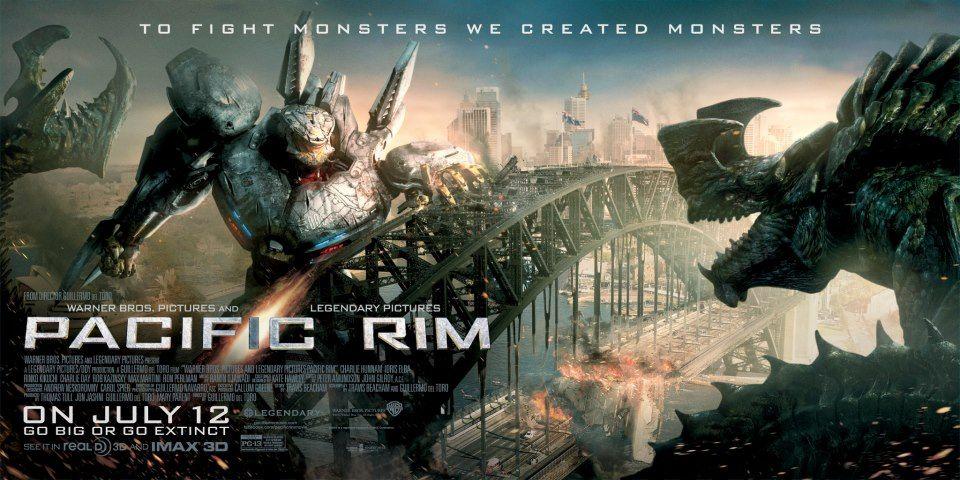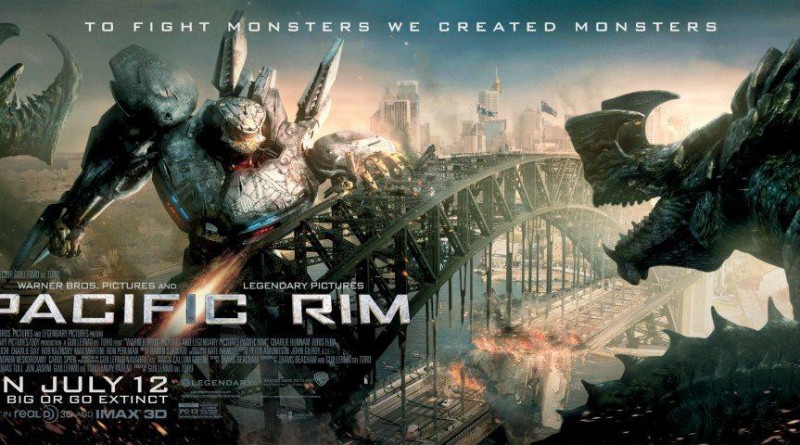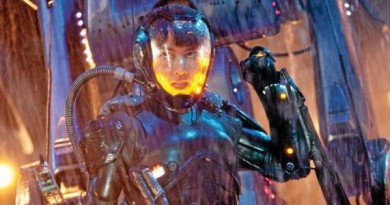Pacific Rim’s Marketing Challenge
 In May, IGN featured a video explaining why two pilots are needed to operate the enormous robots, called Jaegers, which the humans use to fight the invading alien monsters in Guillermo Del Toro’s upcoming movie Pacific Rim. The video discusses the mechanics, including the concept of Drift Space, where the pilots’ brains are fused with the robot. Drift Space requires both pilots to open their minds to one another and share everything about themselves. Although I’m already sold on a movie with giant robots dragging sea liners through downtown to hurl at gigantic aliens, I perked up even more upon realizing that the story will explore character vulnerability, as well. Essentially, the story creates uber-powerful warriors, but at the same time tears down all their emotional defenses and exposes them.
In May, IGN featured a video explaining why two pilots are needed to operate the enormous robots, called Jaegers, which the humans use to fight the invading alien monsters in Guillermo Del Toro’s upcoming movie Pacific Rim. The video discusses the mechanics, including the concept of Drift Space, where the pilots’ brains are fused with the robot. Drift Space requires both pilots to open their minds to one another and share everything about themselves. Although I’m already sold on a movie with giant robots dragging sea liners through downtown to hurl at gigantic aliens, I perked up even more upon realizing that the story will explore character vulnerability, as well. Essentially, the story creates uber-powerful warriors, but at the same time tears down all their emotional defenses and exposes them.
A few days ago, Variety posted an article, Pacific Rim’s Legendary Marketing Challenge, which details how the movie’s marketing campaign started by appealing to the hardcore fanboys and is now hoping to gain traction with women and families. Apparently, the Drift Space video worked exactly as intended, getting me intrigued by the potential for some character drama under the layers of robo-armor. Legendary Pictures, known for tentpole movies like Christopher Nolan’s Batman trilogy and The Hangover movies, is attempting to create an another blockbuster with Pacific Rim.
[Legendary’s president Jon] Jashni maintains that the “fanboy psychographic” isn’t limited to men anymore, and that character helps sell a movie to all audience segments. “There’s an emotional aspect to this movie, and there’s a bombastic aspect,” he says. “Some women will respond to the emotion inherent in the movie, some will respond to the spectacle. Same is true for men and adults. ”To reach all those viewers, though, the film’s marketing must overcome the perception that “Pacific Rim” is “Transformers vs. Godzilla.”
Rightfully, Jashni points out that women can be captivated by the action elements and that the emotional aspects may be the key for enjoying the movie for some men. In the big picture, though, the demographics suggest that more character-driven stories with emotional resonance and vulnerability – like The Hunger Games or Iron Man 3 – will draw larger numbers of women into theaters.
Tricia Barr took her understanding of brand management and marketing, mixed it with a love of genre storytelling, and added a dash of social media flare to create FANgirl Blog, where she discusses Star Wars, fandom, and strong female characters. She also writes about Star Wars for Random House’s science fiction and fantasy blog Suvudu.com and Star Wars Insider magazine and is a contributor for Her Universe’s Year of the Fangirl.
In her spare time, Tricia puts the finishing touches on her first novel, Wynde. For excerpts and tales of her adventures in creating a fictional universe, hop over to TriciaBarr.com.
For updates on all things FANgirl follow @FANgirlcantina on Twitter or like FANgirl Zone on Facebook.
- Hyperspace Theories: Bad Luck Ghorman - June 2, 2025
- Hyperspace Theories: One Year Later as ANDOR Kicks Off Season Two - May 15, 2025
- REVIEW: Tales of the Underworld - May 4, 2025










